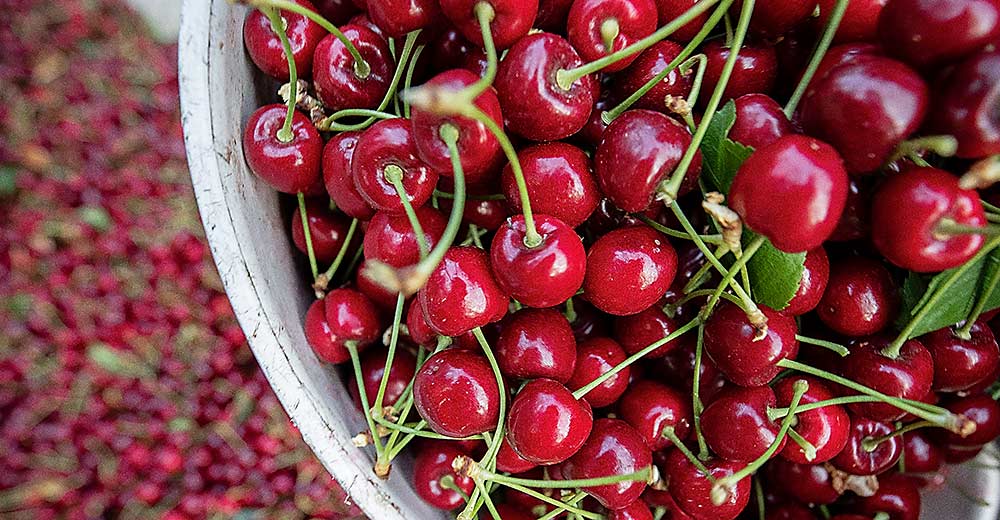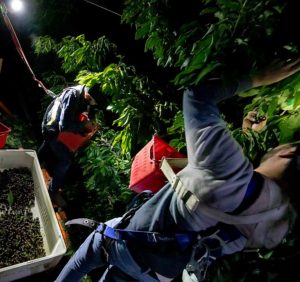
Every cherry season is a fresh start. For Northwest cherry growers, that means a season hallmarked by destructive heat can be followed by an unusually cold and snowy April, as we just experienced.
Growers know we can’t control the weather, but 2022 also promises opportunities, with new market access in India, a smaller California crop forecast and easing or ending COVID-19 restrictions in Southeast Asia.
This season, there’s also a bright side to the fact that many of our Northwest cherry orchards bloomed a full week ahead of last year. The early bloom gives us a chance to begin harvest in late May, which is a good thing. Historically, our seasons are more successful when we get an early start, as we have more time to harvest and market the crop. It appears that we have a chance to achieve this in 2022.
All of us here in the Northwest were happy to put the 2021 season behind us and look forward to a new crop of cherries to share with the world. Last season, we ended up with the warmest summer on record when a bizarre heat dome settled over our growing region in late June (see “Nights in shining orchards”). Throw in a global pandemic that was peaking in Asia during our harvest window, and you have plenty of reasons to forget 2021.
During the Washington State Tree Fruit Association meeting in December, I was chatting with West Mathison, president of Stemilt Growers, about some of the challenges we experienced over the past year. West’s response was short and to the point: “We can’t fix last year’s problems, and our time is better spent focusing on this year’s opportunities.” Simple words of wisdom that all of us should take to heart. So, here are a few things that appear to be opportunities leading into the 2022 season:
California has a smaller crop that appears to be running significantly ahead of last year.
One of the most-asked questions every year is: “How is California’s crop of sweet cherries looking this year?” In 2021, we saw the California industry harvest a record crop that was late and ran into early July. As it turned out, the Californians shipped four times as many cherries in June than ever before.
This year, the crop in California is running 10 to 15 days ahead of last year and, by all accounts, there are fewer buds on the trees in 2022. Most years there will be an overlap between California and the Northwest, but this year’s crop looks to be smaller than last. The key will be communication between both industries, and in years where California has a large crop, both regions need to be focused on late May and early June promotions.
India is in the process of removing the fumigation requirement to ship cherries under a “systems approach” protocol that will make shipping to India much easier.
India is going to be a growth market for Northwest cherries over the next decade. India is the eighth largest country by landmass, the second largest by population, the largest democracy, one of the top 10 when measured by the size of its GDP, and one of the fastest growing economies in the world. As we have seen in our apple business, there is opportunity in India for companies that wish to participate in this up-and-coming growth market.
Though the consumption of cherries has grown in India, sweet cherries have a long way to go to be considered a regular part of the Indian diet. There are several challenges, but with some effective marketing these challenges can be mitigated.
Unlike the bananas and papayas that are perennial and thus a staple part of Indian consumers’ fruit baskets, cherries are seasonal. Apples are also seasonal, but with suitable infrastructure for storage built out in the past two decades, there has been a transformation of apples from being restricted as a winter fruit to being a staple year-round, and the market for apples has continued to expand. Origins and varieties alternate through the months, but for the consumer, apples are a fixture in the Indian diet.
Two other challenges we face are that sweet cherries are not seen as a must-have, nor is the Indian consumer loyal toward a particular origin. Not just consumers but even retail personnel are not aware of the origin of the produce. No significant sustained market development efforts have been made in India, and we at the Northwest Cherry Growers will begin the process of overcoming this disadvantage in 2022.
The market for cherries can be developed by priming demand at the consumer end, by presenting it as a differentiated product at every level of the value chain and not as a commodity. Marketing of the Northwest as an “origin of excellence” will help to benchmark quality and justify price differentials over the long haul. This is a measure that would not only work for consumers but is also necessary to create support in the trade channels. Opportunity exists for us to promote Northwest cherries as the healthy “affordable luxury” grown in the Northwest, the world’s foremost sweet cherry production region.
Secondly, consumers are seeking produce that is better for their sustained health and to address immediate immunity concerns. Increasing fresh fruit consumption in the diet is known to be a contributor to better health, and the specific benefits that cherries deliver can be highlighted and communicated to consumers and trade partners alike. Kiwifruit and berries are facing some of the same pricing, supply and storage challenges as cherries, but they have been successfully nurtured into growth over the past four to five years. The health message plays well in all markets and has been a key part of our promotion strategy in all markets in recent years.
High prices pose another significant challenge. The unpredictability of both demand and supply creates further price-maximization trading behavior at times of short supply, plus there are logistics costs and import duties. Price stabilization measures with a long-term view of the market may help, as would working on the transportation modes and times to reduce costs. The Northwest Cherry Growers will conduct our first full-scale promotional efforts in India in 2022. Our first several years in India will focus on training importers and retailers on the care and handling required when working with our highly perishable fruit.
We see a return to pre-COVID-19 normalcy in Southeast Asia.
At this point, it appears that the countries of Thailand, Malaysia, Singapore and Vietnam have returned to what could be described as “business as usual.” Southeast Asia has quietly become an important export market for the Northwest in recent years. Before the pandemic, in 2019, we shipped 633,000 20-pound equivalent boxes to the region. This past season, all the Southeast Asian countries were locked down due to COVID-19 infections and quarantines through the entirety of the Northwestern U.S. summer. Sadly, our shipments dropped to 281,000 boxes last year. This resulted in a 56 percent decrease in sales to some of our key premium markets. At the time of this writing, China remains in COVID-19 lockdown, which could be problematic, but the opportunity for a largely rejuvenated Southeast Asian market should give us the ability to reclaim success selling our fruit in that region.
—by B.J. Thurlby







Leave A Comment